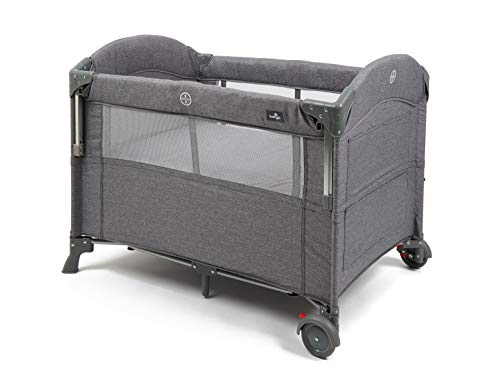Bedside Cosleeper
A bedside cosleeper is a bassinet which is attached to the side of your adult bed. It's safe, as long as you adhere to the CSPC safety guidelines for sleeping spaces for infants.
These guidelines are similar to crib bedding standards. Find out more about the guidelines here. When selecting a bedside sleep device security, comfort and convenience are the most important factors to consider.
Safety
In accordance with the American Academy of Pediatrics' recommendation that infants sleep in the same room as their parents cosleeping (a method that is sometimes referred to as bed-sharing) is becoming popular with many new and expecting parents. The Academy states that room-sharing with a baby is less risky than sleeping in the same bed as a parent because it reduces the risk of Sudden Unexpected Infant Death (SIDS). The AAP does not advocate bed-sharing but it does suggest that co-sleeping on a separate sleeping surface is a good option to decrease the risk of SIDS. This is why the introduction of the bedside cosleeper was so crucial for many families.
A bedside cosleeper is a crib-like sleeper that can be attached to an adult bed frame. The bedside cosleeper lets parents monitor the baby, and also gives the baby the ability to sleep in their own bed. The top cosleepers are constructed using high-quality materials and adhere to strict safety standards. Check for the Juvenile Products Manufacturers Association (JPMA) stamp of approval, which confirms rigorous testing of the product and quality controls, to ensure your child's safety cosleeping experience.
The safety of a crib is dependent on several aspects. This includes the way it's put in place and secured to the parent's mattress. If the bedside cosleeper isn't attached to the parent's bed in a way that blocks the gaps and spaces in which the infant can get trapped, it could pose a suffocation hazard. It is crucial that the attachment system used for a bedside sleeper be tested in order to ensure that it can withstand any forces that may be applied during use, such as the parent bouncing on and off the sleeper. The attachment system or corners on the bedside cosleeper must be tested against an upward force.
The standard that is voluntary for bedside sleepers incorporates by reference to the federal consumer safety standard for products such as bassinets and cradles (16 CFR part 1218) that includes requirements for performance for fabric-sided enclosed openings. The mandatory requirements in the standard also address neck and head dangers through insisting that following the application and release of 50-lb. The standard also states that after the application and release of a 50-lb. cannot be created. ASTM's electronic Reading Room offers read-only versions of the standard.
Convenience
Many parents are reluctant to cosleep because they fear suffocation or SIDS or because it's an act of "Ferberization", which forces children to sleep alone. Anthropologists have noticed for a long time that many primates, mammals, and people from other cultures sleep regularly. This may be because infants are calmed by the familiar voice of their mother, and it may also help them learn to self-soothe.
Internet Page have an innovative design that is attached on the side of any mattress and pivots so that you can easily access it to change diapers or feeds in the middle of the night. Look for one with feet that are adjustable and retract to accommodate various mattress sizes, and a big storage space for all of the necessities for your baby.

Select a bedside sleeper that is compatible with standard crib bedding so that it can be used safely as your child grows. Think about a model that's convertible and can be used as a play area, or a deeper bassinet. It will last for many years.
Portability
Depending on the size of your bedroom, a bedside sleeping system with wheels and/or a light base might be more convenient to move around the house than one with a heavy wood frame or substantial base. The babybay Bedside Sleeper, HALO BassiNest Essentia and Snoo Smart Sleeper are all equipped with great portability features: adjustable feet that retract to accommodate platforms and the legs fold inward to give the most comfortable closeness to the mattress and a 100% mesh sidewalls that let airflow without fabric covering the baby's nose or mouth.
The Arm's Reach ClearVue is another top choice that adjusts in 1" increments to fit in most adult beds and can also function as a portable bassinet. It also pivots to give you easy access to your baby to comfort her, nurse her, or monitor them during the night.
